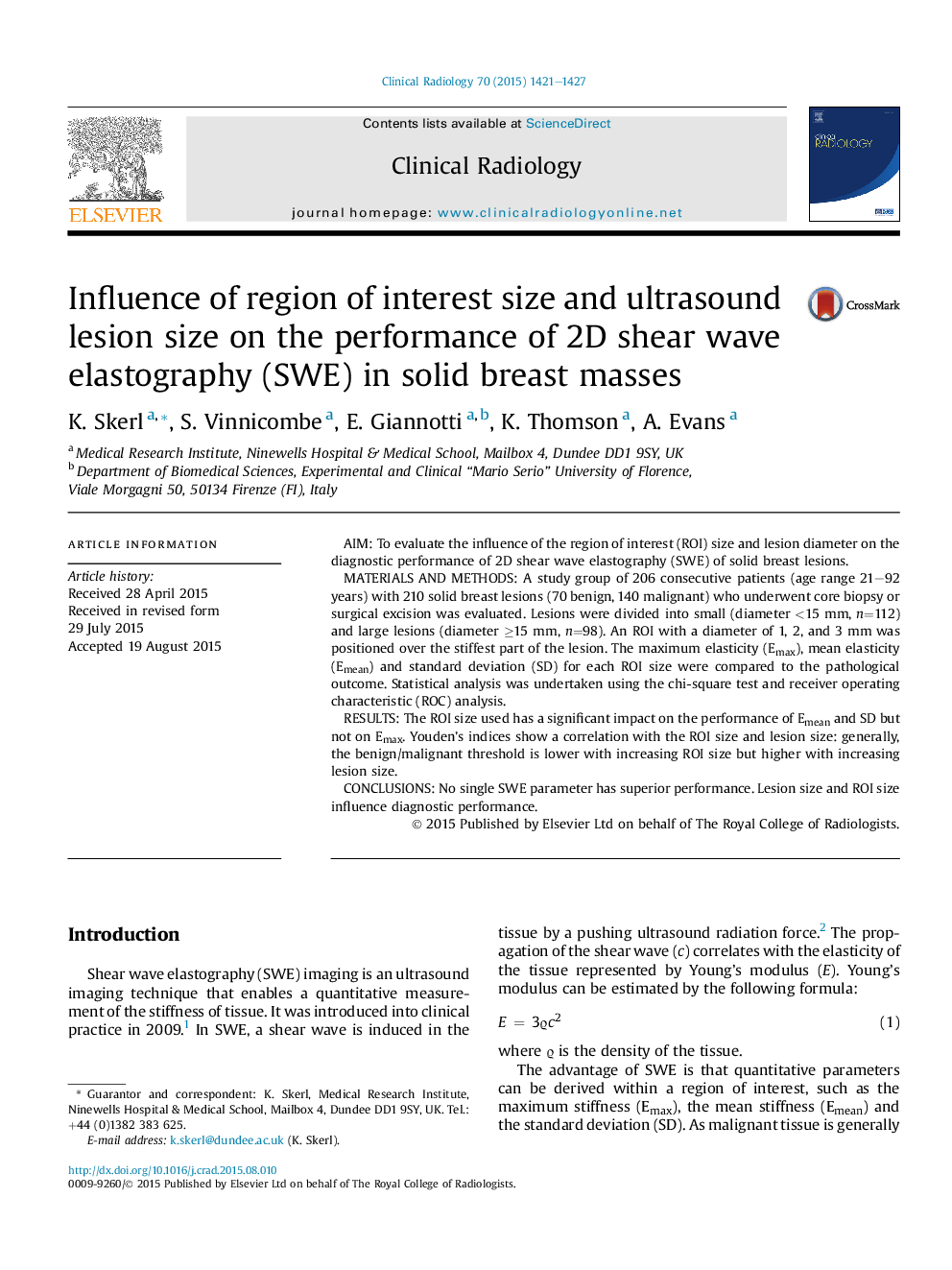| Article ID | Journal | Published Year | Pages | File Type |
|---|---|---|---|---|
| 3981362 | Clinical Radiology | 2015 | 7 Pages |
•Optimal cut-off for benign/malignant differentiation depends on lesion size.•Region of interest size influences measurements of mean elasticity and standard deviation.•Large lesions are stiffer than small lesions.•Optimal cut-off for benign/malignant differentiation should increase with increasing lesion size.•Region of interest of 2 mm achieved best compromise of the diagnostic performance for all SWE parameter.
AimTo evaluate the influence of the region of interest (ROI) size and lesion diameter on the diagnostic performance of 2D shear wave elastography (SWE) of solid breast lesions.Materials and methodsA study group of 206 consecutive patients (age range 21–92 years) with 210 solid breast lesions (70 benign, 140 malignant) who underwent core biopsy or surgical excision was evaluated. Lesions were divided into small (diameter <15 mm, n=112) and large lesions (diameter ≥15 mm, n=98). An ROI with a diameter of 1, 2, and 3 mm was positioned over the stiffest part of the lesion. The maximum elasticity (Emax), mean elasticity (Emean) and standard deviation (SD) for each ROI size were compared to the pathological outcome. Statistical analysis was undertaken using the chi-square test and receiver operating characteristic (ROC) analysis.ResultsThe ROI size used has a significant impact on the performance of Emean and SD but not on Emax. Youden's indices show a correlation with the ROI size and lesion size: generally, the benign/malignant threshold is lower with increasing ROI size but higher with increasing lesion size.ConclusionsNo single SWE parameter has superior performance. Lesion size and ROI size influence diagnostic performance.
